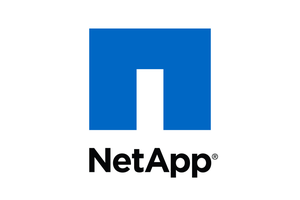NetApp Finds Its Cloud Feet

NetApp appears to have turned the corner and finally found a solid story to tell about its cloud plans.
I've been frustrated by NetApp's cloud approach for a few years. The ideas were solid enough, but the delivery on them, and the communication to customers, lagged the potential. We saw the result in flat and declining revenues.
Now it looks like NetApp has managed to acquire enough outside talent who truly understand the non-ONTAP world that it can start to move past its own heritage and become an innovative company again. The portfolio of cloud products and services is now broad enough to provide useful options to enterprises who like NetApp on-site but also want to be using more cloud. NetApp is adding features and functions to suit what customers are looking for today, rather than coasting on past glories.
“Having built a public cloud from scratch […] I can tell you, storage is hard,” said Eiki Hrafnsson, Technical Director Cloud Data Services. Hrafnsson came to NetApp about 8 months ago when NetApp purchased Greenqloud, the Icelandic hybrid cloud management platform founded by Hrafnsson and Tryggvi Larusson and steered into acquisition by ex-CEO Jonsi Stefansson who is now VP of Cloud Services at NetApp.
Greenqloud had tried to do things with more bleeding edge solutions, and found all of them wanting. “It was only when we started to use NetApp that we saw real stability, and real performance at the same time,” he said.
Stability and performance are fairly important for storage systems, regardless of whether they're on-site, in a colo, or in the cloud. What's been lacking, however, has been the modern set of features that application developers have been looking for. Developers have been willing to put up with lower performance, and sometimes less stability, in order to gain access to features.
“A lot of people, including myself, would ask ‘Why would I use ONTAP as a controller in the cloud?,” said Hrafnsson, “Just use EBS, right? But when I looked into it, it's actually cheaper, and higher performance, and cheaper, to use an ONTAP cluster in AWS than to use EBS.”
NetApp's new Cloud Volumes service builds on this foundation to provide the same high-performance and featureful storage layer, but as a consumption service with APIs to drive it all. The full suite of cloud options is clearly laid out at cloud.netapp.com and it seems to me that NetApp has done a good job of clearly articulating what it offers people, and why they should want it.
Not everyone will, and that's okay. What's been lacking until now is a clear message from NetApp about why cloud people should entertain NetApp as a solution, and there is still a lot of work to be done to emerge from the long shadow of the appliance-based ONTAP that made the company successful.
The network side of cloud continues to be the thorn in the side of NetApp's cloud aspirations. Those pesky egress charges create a substantial switching cost if you invest in one particular cloud and then change your mind. It works great for the cloud provider, of course, but not so great for customers tring to be agile and responsive, which is what cloud is supposed to be about. For customers with a lot of data—or plans to use a lot of data—this is an important planning consideration when deciding where, or even if, to go to cloud.
It's a bit cheeky on the part of the cloud providers, since enterprises are already paying for the service to be available when they order the network links and ExpressRoute or DirectConnect. Charging for flashing the lights on the fibre links, but only when data is leaving the castle, doesn't seem all that fair to me, and I struggle to understand what value is being created for customers here.
NetApp has options that help with this (NetApp Private Storage, for example) but for services like Cloud Volumes it's largely outside of NetApp's control. This problem isn't unique to NetApp, of course, but I wonder how much of a drag it will be on migrations of significant datasets into the cloud.
These economic incentives mean certain cloud designs dominate when other, possibly superior ones could be used. It's an area that I think deserves greater scrutiny.
I attended Cloud Field Day 3 as a guest of GestaltIT and was not paid for my time. You can read my disclosure post about the event here.
This article has been updated to clarify that Greenqcloud was not a public cloud at the time NetApp purchased it, and to highlight the role of Stefansson in taking Greenqloud in a new direction that lead to it being acquired. My thanks to Hrafnsson for correcting me and sharing credit with others.
This article first appeared in Forbes.com here.
